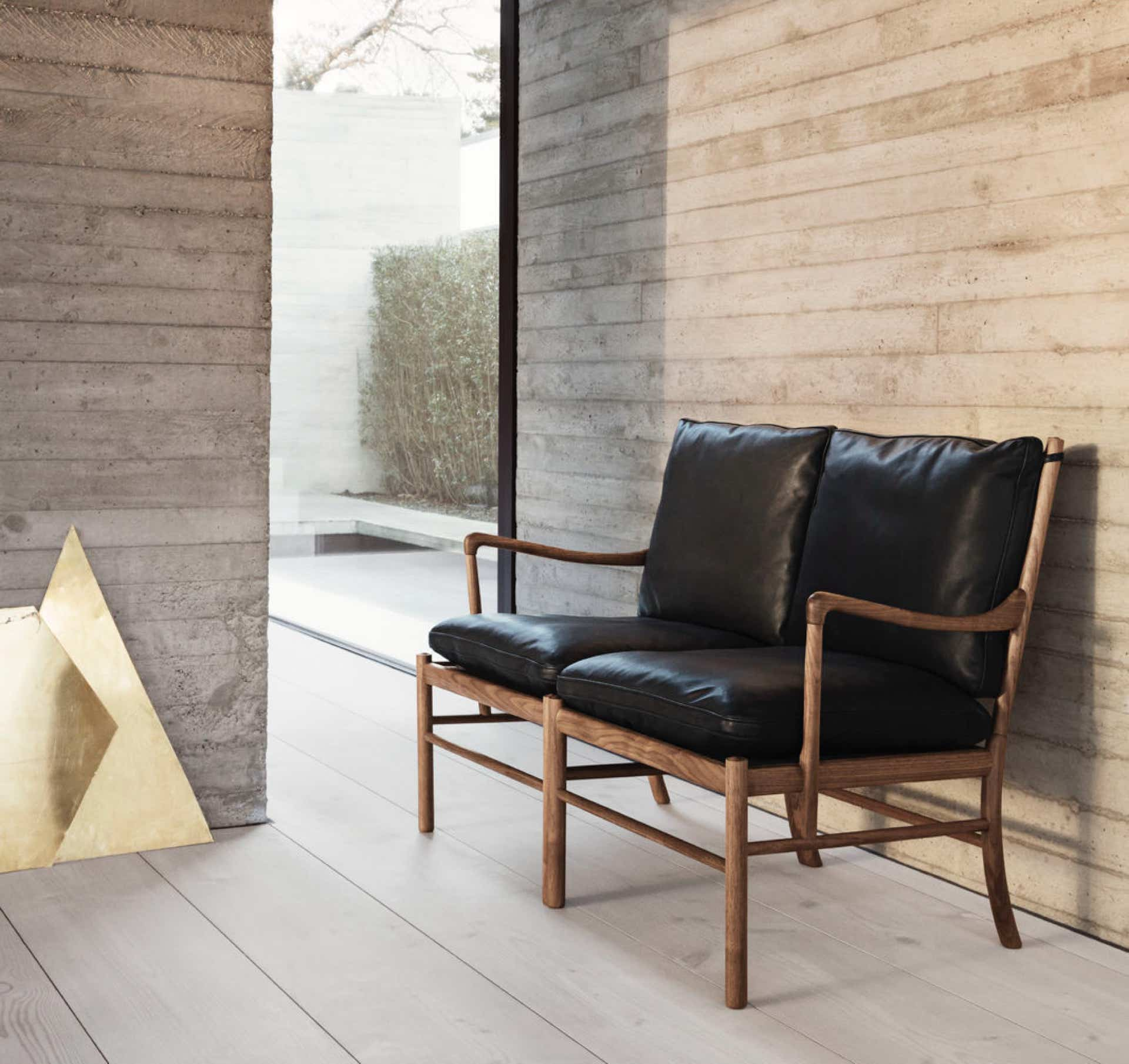Home > Carl Hansen > Sofas > OW149-2 Colonial sofa
Home > Carl Hansen > Sofas > OW149-2 Colonial sofa
20% OFF UNTIL JANUARY 31

Retaining the same basis of design of the armchair, the Colonial Sofa OW149-2 clearly reflects Wanscher’s penchant for the light and delicate shapes, as well as his fascination with English furniture of the 18th century.
By designing the OW149, he wished to create a furniture that pays tribute to classic conservative taste while resisting the test of time. The Colonial sofa, like the Colonial armchair, is available in walnut and oak, with a varnished, soaped, oiled or tinted black. The sofa is available with fabric or leather cushions.
Dimensions 124 x 68 x H85 cm
Seat height 46 cm
Base solid wood
Seat / backrest CMHR cold fireproof foam
OW149-2 Sofa – Oak
from
OW149-2 Sofa – Walnut
from
fabric Re-wool 768 (price group 2) / soaped oak
fabric Re-wool 558 (price group 2) / soaped oak
leather Sif 98 / black painted oak
leather Sif 98 / white oiled oak
leather Thor 310 / white oiled oak
leather Sit 95 / white oiled oak
leather Sif 98 / oiled walnut
leather Sif 95 / oiled walnut
Ole Wanscher

Ole Wanscher (1903-1985) was integral to the core aesthetic and functionality of modern Danish design. He studied under Kaare Klint at the Royal Danish Academy of Fine Arts and later worked at Klint’s design studio before becoming an independent furniture designer. He helped shape Danish furniture design as a designer and as an educator when he took over Klint’s professorship at the Academy.
Wanscher’s classic and contemporary designs made him popular. In 1958, the Danish newspaper Politiken wrote: “Owning a Wanscher chair is an adventure every day, and will be so even several hundred years from now, for this is how long it lasts”. Today, his modern classics are still revered for their detail and his deep respect for materials.
While traveling through Egypt and Europe, Wanscher studied furniture design, finding inspiration in varied visual expressions that he incorporated into his own unique design aesthetic. He viewed furniture design as a branch of architecture and emphasized slim dimensions and resilient forms – a quest exemplified in many of his works, particularly the Colonial Chair and Colonial Sofa.
Wanscher created his best-known designs primarily between the late 1940s and early 1960s, in the post-war era when the “design for everyone” philosophy emerged. In Denmark, some of design’s biggest names created functional and affordable furniture for the Danish people and the small spaces they lived in. Wanscher took great interest in industrially produced yet high-quality furniture, designing several successful pieces.
Wanscher’s design earned him numerous accolades, including the Copenhagen Carpenters’ Guild Annual Award and the gold medal at the Milan Triennale in 1960 – honors that underscored Wanscher’s esteemed reputation both in Denmark and internationally.